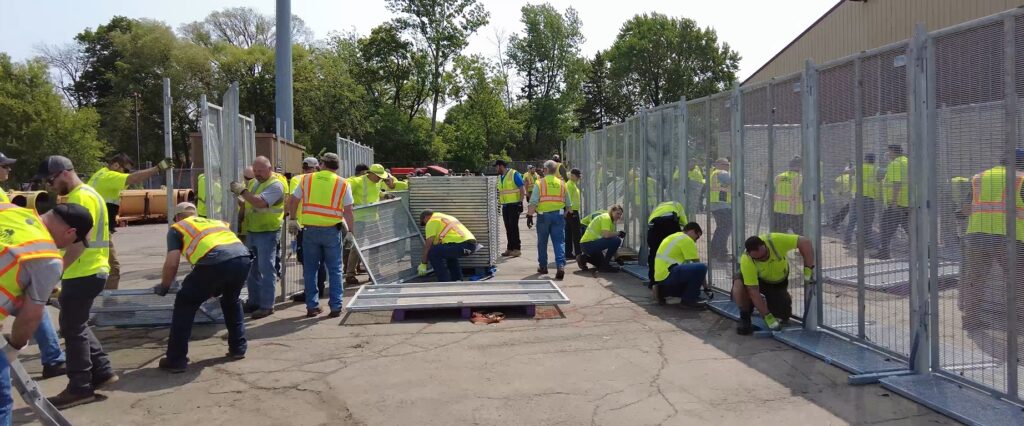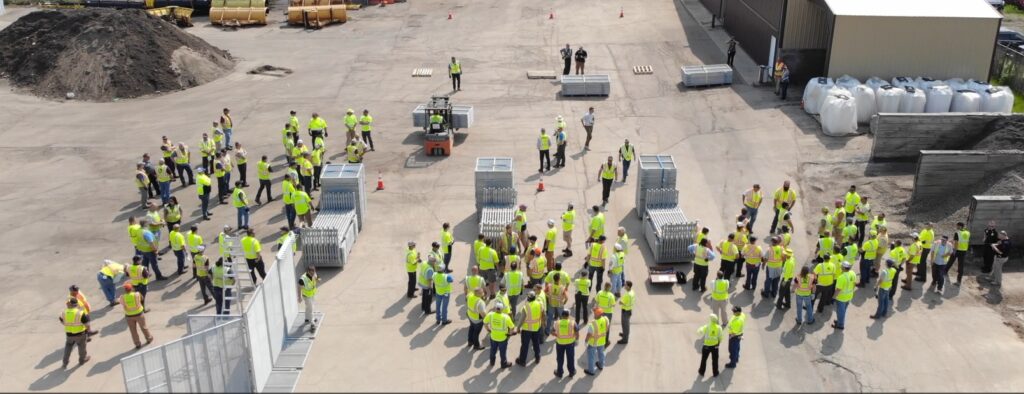In 2020, the Minneapolis/St. Paul Metropolitan area experienced a significant amount of civil unrest in response to the murder of George Floyd that resulted in looting, property damage, injuries, mental health impacts, and community trauma. More than 250 buildings were burned in Minneapolis and St. Paul, including the Minneapolis Police Department 3rd Precinct. The 3rd Precinct was destroyed and is currently still boarded up and fenced off. In addition to all of the metropolitan area city and county Mobile Field Forces being deployed, the Minnesota State Patrol and Department of Natural Resources Mobile Field Force was deployed, and the Minnesota National Guard called up. The amount of resources consumed for the response to the civil unrest clearly showed that regional-based coordination of efforts was required.
In April 2021, Daunte Wright was killed in the city of Brooklyn Center, which is a few miles northwest of Minneapolis, when an officer mistakenly discharged her firearm thinking it was her taser. As a result of the civil unrest that followed 35 businesses in Brooklyn Center alone were damaged with at least three being set on fire. Criminal behavior was not limited to Brooklyn Center with looting and other crimes spreading to neighboring cities. Again, city and county mobile field forces were deployed, along with the Minnesota State Patrol and Department of Natural Resources Mobile Field Force. Minnesota National Guard resources were also used because they were already positioned due to the trial of the officer involved in the George Floyd case.
In June 2021, a significant number of public agency professionals (with police, fire, public works, and emergency management backgrounds) joined together to form a Fence Working Group to explore the identified challenges and develop a collective path forward. Based on all the recent experience with civil unrest, the critical role that anti-scale fencing can serve for de-escalation and establishing a space for lawful protests became apparent. That said, it was also found that obtaining anti-scale fencing is a significant challenge due to many factors, as well as being very expensive. To respond to this identified need, a Fence Working Group was established.
The Fence Working Group’s efforts have led to the formation of a Fencing Consortium. The Fencing Consortium is made up of local government agencies (members) within the seven-county Minneapolis/St. Paul Metro area (with the ability to be expanded to be any local government in the state) that will jointly contract with a fencing vendor for the availability, storage, maintenance, and transportation of anti-scale fencing (including vehicle gates and pedestrian doors). Currently, there are 32 members across five counties in the metro area. The Consortium has, at a minimum, enough fencing for the largest police department building in the Consortium. However, the Consortium has the flexibility to increase the amount of fencing, gates, and doors as additional local governments join the Consortium.
The intent of the Fencing Consortium is to provide anti-scale fencing within hours, not days, around potentially impacted government building(s) in response to a critical incident. The goal of the anti-scale fencing is to de-escalate the potential tensions and try to reduce/eliminate the non-tangibles associated with civil unrest such as:
- Provide physical separation between law enforcement and protesters
- Promotes improved mental health environment for all (reduce PTSD)
- Pre-plan and standardize perimeter layout
- Reduce the need for crowd-control measures to be used
- Improved safety for all
- Minimize potential impact on adjacent properties
- Crowd-control measures are seen as escalating
- Another tool for law enforcement facilitating peaceful protests
- Create a space for protesting
- Not seen as officers vs. protesters, but protesters just protesting (including optics)
- Supports efforts to coordinate/communicate with specific protest groups and organizers ahead of time
- Improved distinction between legal protesters and “violent and destructive actors”
- Officers in riot gear and with crowd-control measures are more likely to be able to remain out of sight of legal protesters
- Reduce resource demands committed to one location
- Local law enforcement agencies are too small to handle large-scale civil disturbance
- Potentially need fewer officers for security at the site
- Free up more resources to continue to respond to calls for service in impacted community
- Takes into consideration that protests may be protracted event
The purpose and structure of the Fence Consortium is to provide experienced leadership for fence deployment operations across multiple jurisdictions in a unified command structure and coordinate during the deployment of anti-scale fencing. This includes considering and planning for operational logistics and tactical planning associated with fence deployment. The Fence Consortium itself is a multi-agency, pre-planned, coordinated resource management system to continue efforts to minimize multiple local and state agencies from being over-extended.
Fence deployment team
One of the biggest costs and factors for the deployment of any fence is the labor, equipment, and scheduling of staffing to set up the fence. Because of this the Working Group determined that the best way to meet these logistical needs is to leverage the existing Statewide Public Works Mutual Aid Pact to provide the labor and equipment needed to deploy the fence. Not only does this approach mean that the Fencing Consortium does not have to directly address labor items such as worker compensation insurance and other labor issues, but it also is in line with how police and fire use existing mutual aid agreements during civil unrest.

Each Consortium member would need to provide a minimum of 1 to 3 people who would be assigned to the Fence Deployment Team. This team would train so that when the call to deploy the fence was made, everyone would be familiar with what needed to be done and it could be done as efficiently as possible. Each Consortium member would cover the costs, including if there was a deployment (likely overtime), of their staff on the Fence Deployment Team. Considerations will be made for really small public works departments (just a few members) or agencies with no public works staff.

State funding request
The Fence Consortium has requested $5 million from the State of Minnesota for the purchase of anti-scale fencing and associated vehicle gates and pedestrian doors. If obtained, the state funding for the purchase of anti-scale fencing for the Fencing Consortium will significantly reduce the ongoing cost each Consortium member will pay for the storage, maintenance, and transportation of the anti-scale fence. This reduction in cost will improve equity in accessibility to this de-escalation and safety tool for communities across not only the Seven County Metro area, but also the state as a whole.
One other side note of importance is that while the Fence Consortium started in response to the lessons learned from civil unrest, the fencing could also be used in a situation where a building becomes compromised due to a natural disaster, fire, or other non-hostile incident.
The Fencing Consortium is a model example of how multiple local jurisdictions have come together to establish a collective resource that is greater than any one agency could have done alone. The benefits of the Fencing Consortium are not limited to the anti-scale fencing deployment because of the partnerships and professional relationships that have developed due to the consortium. As the saying goes, you never want to exchange business cards at the scene of a disaster. The Fencing Consortium is just another medium to help establish, build, and maintain those relationships.
The views expressed here are the writer’s and are not necessarily endorsed by Homeland Security Today, which welcomes a broad range of viewpoints in support of securing our homeland. To submit a piece for consideration, email editor @ hstoday.us.








